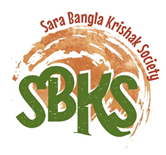Agribusiness Cluster Mapping and Market intelligence Survey
Agricultural in Bangladesh now in transition – shifting from subsistence to semi-commercial or commercial ventures. The drivers are smallholder farmers those constitute 85 percent of the farming community. They have been changing cropping patterns, diversifying crops, using appropriate scale technologies and investing in high value agriculture, be it livestock, fisheries, agroforestry or high-value crops rather than traditional rice paddy. As a result, high-value agriculture clusters are emerging all over Bangladesh—from riverine chars to coastal chars to haor flood plains to the hills.
There have been no studies to date that focus on the emerging agribusiness SME clusters and crop zones. Only the Bangladesh Agricultural Research Council (BARC) has developed crop suitability maps on the basis of the Land Suitability Assessment and Crop Zoning of Bangladesh. This provides basic information for the growing potential of 14 crops showing ‘very suitable’ and ‘suitable’ areas. However, there is no information available for potential areas/zoning of livestock and fisheries, despite the fact that Bangladesh has one of the highest cattle densities in the world as well as the fifth position in world aquaculture production (DoF, 2019).
SBKS and FAO Bangladesh have been jointly conducting Agribusiness Cluster Mapping and Market intelligence Survey with an aim to gather the information on clusters and markets in a way that would be most beneficial to smallholders and the private sector. The results will help to prioritize major clusters, patterns and commodities in order to identify which smallholder farmers may wish to organize themselves into POs. Also, survey results will be used for designing the proposed PO-led project – if awarded from GAFSP in December 2021.
